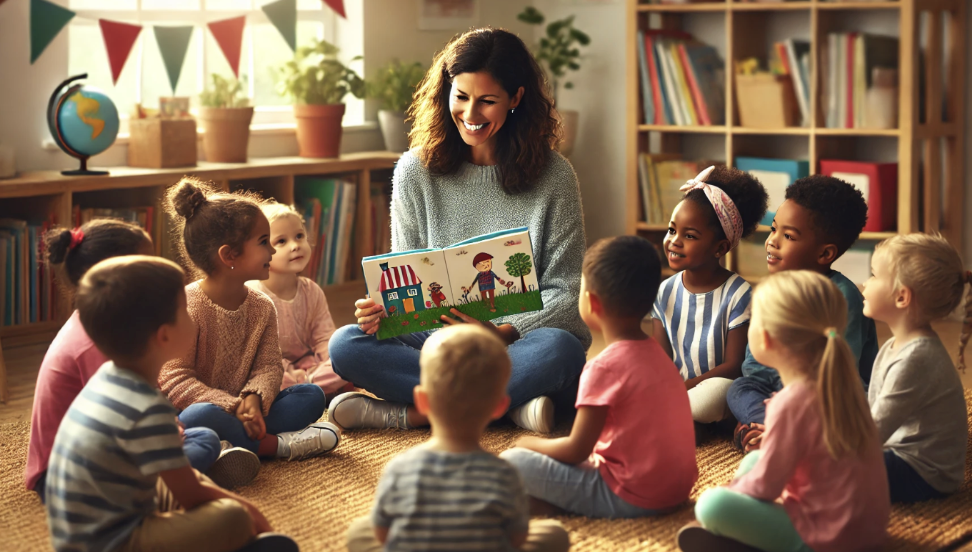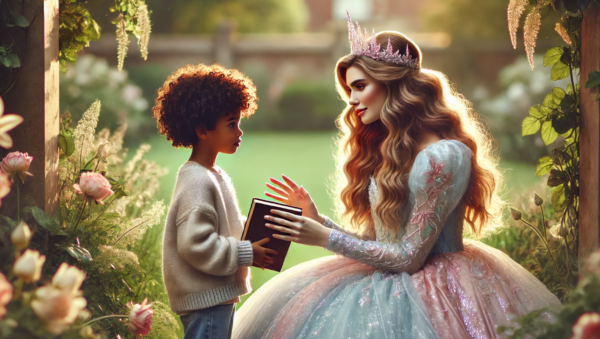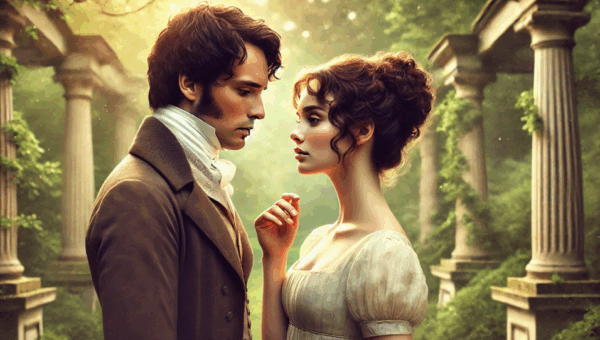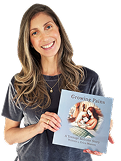There’s a certain magic in children’s picture books, the way they spark young imaginations with simple words and vibrant illustrations, inviting readers into a world of wonder. Each page is a new adventure, a chance to explore, learn, and dream, making these books a cherished part of childhood for both kids and parents. Timeless classics like The Very Hungry Caterpillar and Goodnight Moon have earned their place as bedtime favorites, passed down through generations. But these books offer more than just entertainment; they teach valuable lessons and nurture early literacy.
Creating a picture book is an act of storytelling magic. It’s about crafting a tale that ignites curiosity, evokes joy, and fosters a lifelong love of reading. Whether you’re imparting a lesson, inspiring laughter, or whisking little ones off on an adventure, this article will guide you through the essential steps to crafting your own memorable children’s book. From developing relatable characters to pairing simple language with captivating illustrations, you’ll be well on your way to creating a story that will captivate young minds and make family reading time unforgettable.
Importance of Picture Books in Children’s Literature
Picture books hold a special place in children’s literature, serving as a gateway to the world of reading and learning. They play a crucial role in developing essential skills such as language, literacy, and critical thinking. Through the combination of text and illustrations, picture books help young readers understand and interpret stories, fostering a love of reading and exploration. Moreover, these books are powerful tools for teaching important life lessons, promoting empathy, and encouraging creativity and imagination. Whether it’s a story about a little girl discovering the magic of friendship or a hungry caterpillar’s journey, picture books leave a lasting impact on young minds, making them an indispensable part of early childhood education.
Start with a Simple, Engaging Concept for Children’s Books
When crafting picture books, simplicity is key. Young readers thrive on clear, straightforward stories that allow their imaginations to soar without getting lost in complex plots. Classic books like Where the Wild Things Are and The Snowy Day demonstrate how a simple idea, whether it’s a wild adventure to a magical land or a child’s snowy day, can become a wonderful story that stays with readers for life.
Classic stories like ‘The Little Train Engine That Could‘ emphasize themes of determination and perseverance, showing how persistence can lead to success. To create an engaging concept, start by thinking about themes that resonate with young minds: the warmth of bedtime routines, the joy of friendships, or the thrill of small adventures. Keep the storyline direct but meaningful, letting each page reveal something delightful or unexpected.
Brainstorming around these everyday wonders helps in teaching kids about understanding the world in ways they can relate to. With a simple, enchanting idea as your foundation, you’re on your way to crafting a story that captivates young imaginations and brings joy to reading time.
Once the concept is clear, the next step is finding an illustrator whose style complements the story’s tone. Some stories call for bold, vibrant colors that leap off the page, while others need soft, cozy illustrations that feel like a warm hug. Authors and illustrators work closely to bring the original story to life visually, making sure each page captures the imagination of little readers and draws them deeper into the book’s world. Through this creative partnership, words and art blend seamlessly, creating a story that children can’t wait to explore over and over again.
Crafting Memorable Characters
In children’s books, memorable characters often serve as the heart of the story. From the playful Peter Rabbit to the endearing bear Corduroy, characters with relatable or whimsical traits instantly connect with young readers, sparking joy and curiosity. The most unforgettable children’s characters have qualities that children can recognize or aspire to, such as:
- Curiosity
- Bravery
- Kindness
- A touch of mischief
Chris Van Allsburg, renowned for his engaging storytelling in books like Jumanji and The Polar Express, is a master at creating characters that capture the magic of childhood experiences.
Creating characters that resonate doesn’t require overly complicated details. Often, a single trait or quirk is all it takes to make them stand out. Consider these examples:
- A little girl who always wears mismatched socks
- A boy who has a knack for finding hidden treasures
Such traits make characters both relatable and unique.
Animals, too, can become memorable characters. Think of a friendly bear or a clever fox; these characters tap into children’s love for fantasy and friendship, providing both adventure and companionship.
When designing characters:
- Keep it simple but vivid
- Focus on a few strong traits that children can easily remember
- Add a dash of fun and a bit of heart
By doing so, you’ll create characters that children will want to meet again and again, making your story one they can’t wait to revisit.
Use Simple Language with a Rhythmic Flow
In children’s books, the magic of language lies in its simplicity and rhythm. Young minds respond to rhythmic patterns that make words both memorable and fun, helping kids learn language naturally while enjoying the story. Iconic authors like Bill Martin Jr. and Audrey Wood know this well; their use of repetitive, sing-song phrases draws children in and makes each page turn delightful. Books like Brown Bear, Brown Bear, What Do You See? and The Napping House are loved not just for their stories but for their musical language that’s perfect for little ones.
To create this engaging rhythm, use repetition, rhyme, or alliteration. A tale about a “silly snail sliding slowly” or a “bouncy bunny bounding boldly” sticks in the reader’s memory. Don’t hesitate to add a dash of humor with funny words that children enjoy repeating, like “zigzag,” “splish-splash,” or “hop-along.”
A rhythmic flow makes your story ideal for read-aloud moments, like bedtime stories, when little ones can enjoy the sound and feel of words as much as the story itself. By crafting your language with rhythm, you’ll create a tale kids will want to hear and chant along with, again and again.
In a bright, cozy nook with paper and pen,
Sat a fox, a frog, and a wise old hen.
“Let’s write down our tales, big and small,
Of heroes and dreams, and kingdoms tall.”
They scribbled and drew, made pages turn,
Each story is a spark, each word a bright burn.
With a stamp and a cheer, their books took flight,
Spreading magic and joy by day and by night.
Embrace Playful Illustrations in Picture Books
In children’s picture books, illustrations are more than just decorations—they are an essential part of the storytelling magic. For young readers, this is often their first experience of combining pictures with words. While adults can read and visualize the story in their minds, children rely on vibrant illustrations to follow the narrative, even without words. Picture book artists like Eric Carle, Beatrix Potter, and Ezra Jack Keats excel at creating worlds so colorful and expressive that children are instantly drawn into the story.
For example:
- Eric Carle’s The Very Hungry Caterpillar uses bold colors and textures, making each page a visual treat.
- Beatrix Potter’s charming Peter Rabbit illustrations bring her characters to life with soft, watercolor tones.
- Ezra Jack Keats, in The Snowy Day, uses simple yet captivating scenes to mirror a child’s wonder while exploring a snowy world.
These artists show how thoughtful, playful art can transform a simple story into an immersive experience.
When creating or collaborating on illustrations:
- Match the visual style to your story’s tone
- For a whimsical tale, use bold, playful colors and quirky designs
- For a softer, heartfelt story, opt for gentle colors and simpler lines
Work closely with your illustrator to capture the emotions and energy of each scene. Make sure that each image enhances the words, creating a seamless blend of art and story. When illustrations and text align perfectly, you’ll craft a book that sparks imagination and gets children excited to turn every page.
Keep the Story Short, Sweet, and Meaningful
For young readers, a concise, engaging narrative is key. Picture books thrive on brevity, capturing kids’ attention with short, delightful stories that make an impact without overcomplicating things. Books like Harold and the Purple Crayon and If You Give a Mouse a Cookie show how simplicity can enhance meaning by focusing on a single, memorable storyline. They keep young readers engaged and leave a lasting impression.
When crafting your story, aim to keep it short and purposeful, weaving in a subtle message without overwhelming the reader. For example, a tale written about a little bear learning to share or a kitten discovering kindness can gently teach values like friendship, empathy, or imagination. The key is to blend the message naturally into the story so it feels like a part of the adventure, not a lesson.
To keep your plot simple yet meaningful, focus on one main theme or problem and resolve it in a way that feels satisfying and true to a child’s world. With a short, sweet storyline, you’ll capture young hearts and minds, making your book a delightful, educational experience kids will want to revisit again and again.
Design and Layout
Professional book design and formatting are essential for creating a successful picture book. It’s not just about making the book visually appealing; it’s about crafting an engaging, easy-to-follow experience for young readers. The layout, including the strategic placement of text and illustrations, should be thoughtfully formatted to ensure a smooth, seamless reading journey. Consistency in design is crucial; maintaining a clear, cohesive style throughout the book strengthens both the story and its themes, creating a unified and enjoyable experience.
The book cover is the first visual interaction a reader has with the story, so it’s essential to get it right. A well-designed cover should capture the essence of the book, drawing both children and parents in at first glance. It needs to reflect the tone of the story while being bright and inviting. A compelling book cover not only piques curiosity but also sets expectations for the adventure inside.
Whether it’s the bold, vibrant colors of Eric Carle’s The Very Hungry Caterpillar or the soft, watercolor tones of Beatrix Potter’s Peter Rabbit, the design and formatting should enhance the narrative, drawing children deeper into the world of the story with each page turn. Thoughtful design and layout work together to immerse young readers, making them feel like they’re part of the adventure and encouraging them to return to the book time and time again.
Spark Joy and Wonder
In children’s literature, few elements are as captivating as wonder. Picture books that elevate everyday life to magical heights or transport readers to fantastical worlds leave a lasting impact on young minds. Stories like The Polar Express and Goodnight Moon bring wonder to life: The Polar Express invites kids on a magical train ride to the North Pole, and Goodnight Moon transforms a simple bedtime routine into a cozy, enchanting ritual. These books show how a sense of wonder can create joyful, memorable experiences that stay with children for years.
To infuse your story with wonder, consider framing ordinary events as adventures or exploring imaginative settings. A child’s backyard might become a jungle for a daring explorer, or a rainy day might open the door to an underwater world. Use descriptive language and vivid illustrations to bring these moments to life, sparking curiosity about the world.
Encourage young readers to ask questions, dream big, and see magic in the small things. When a story kindles joy and wonder, it becomes a beloved treasure, inviting children to return again and again, with each read sparking fresh excitement and discovery.
Inspiring the Next Generation of Young Readers
Creating picture books isn’t just about storytelling; it’s about sparking joy, curiosity, and hope in young readers. With each delightful story you bring to life, you’re helping children explore the world, laugh at funny moments, and find comfort in gentle tales. For parents and kids alike, your work becomes a cherished part of daily routines, school activities, and quiet bedtime rituals, a gateway to the magic of reading that opens hearts and minds.
Contributing to children’s literature is a meaningful and fulfilling journey. It’s about shaping young minds, planting the seeds of creativity and empathy, and inspiring future generations of readers. Through your stories, you provide not just entertainment but valuable lessons and endless opportunities for growth and imagination. As you craft your story, know that you are creating lasting memories, sparking curiosity, and offering children the chance to see magic in the everyday and discover courage in themselves.
The stories you write today will become the treasures of tomorrow, bringing smiles, laughter, and wisdom to families for generations to come.
Your Publishing Journey Awaits – Start NowFAQ – How to Write Children’s Picture Books: Tips for Engaging Young Readers
Q1: What makes a great children’s book?
Great children’s books blend:
- Relatable characters
- Simple but vivid language
- A strong emotional core
- A clear narrative arc
- Illustrations that enhance the text
Books that invite interaction, spark imagination, or offer comfort tend to become favorites.
Q2: What’s the difference between a children’s book and a picture book?
All picture books are children’s books, but not all children’s books are picture books.
- Picture books: Geared toward ages 2–8, heavily illustrated, with minimal text (usually under 1,000 words).
- Children’s books (broadly): Include early readers, chapter books, and middle grade novels, with varying word counts and complexity.
Q3: How do you start a first sentence for a children’s book?
A powerful first sentence in a children’s book should establish tone, spark curiosity, and introduce the character or situation. It’s often simple and emotionally engaging. For example:
“Lola didn’t know today would be the day everything changed.”
Keep it age-appropriate, action-driven, and reflective of the story’s voice.
Q4: How many pages is a typical children’s picture book?
The industry standard for traditionally published children’s picture books is 32 pages. This number works well for printing layouts and allows room for story development across roughly 12–16 spreads, with some pages allocated for copyright, title, and endpapers.
Q5: What is the rule of three in picture books?
The “rule of three” is a storytelling principle where events, phrases, or characters are grouped in threes to create rhythm, build suspense, and deliver satisfying payoffs.
Classic example: “The Three Little Pigs”.
In picture books, this often translates to three obstacles the protagonist must overcome.
Q6: How much does it cost to publish a children’s picture book?
Publishing costs vary widely:
- Self-publishing: $2,000–$10,000 depending on illustrator fees, editing, layout, and marketing.
- Traditional publishing: The publisher covers costs, but acceptance is competitive.
High-quality illustrations are often the most significant expense.
Q7: How do I copyright my children’s picture book?
Your book is automatically protected by copyright as soon as you create it. To instantly secure your rights, you can register it through [copyright.gov] for $45–$65. But if you’re self-publishing with Spines, copyright registration is included for free, your work is automatically registered when you upload your manuscript. No extra steps, no added cost, full legal protection.
Q8: Can you make a living writing children’s books?
Yes, but it’s challenging. Most children’s book authors earn modest incomes from book royalties, speaking engagements, or school visits. Successful authors often build multiple revenue streams.
Only a small percentage earn enough from book sales alone to make it a full-time job.







